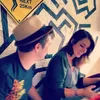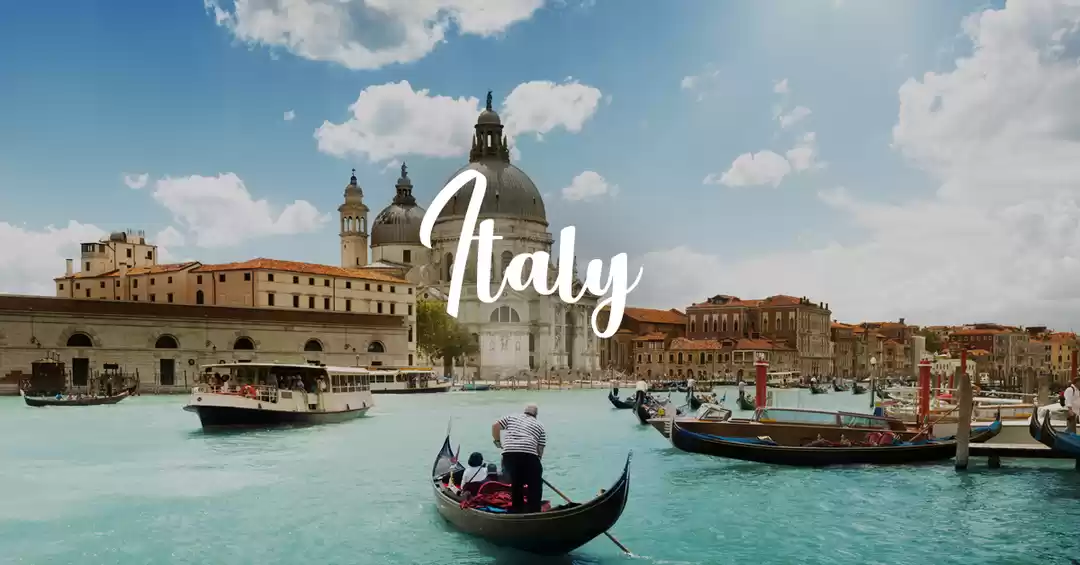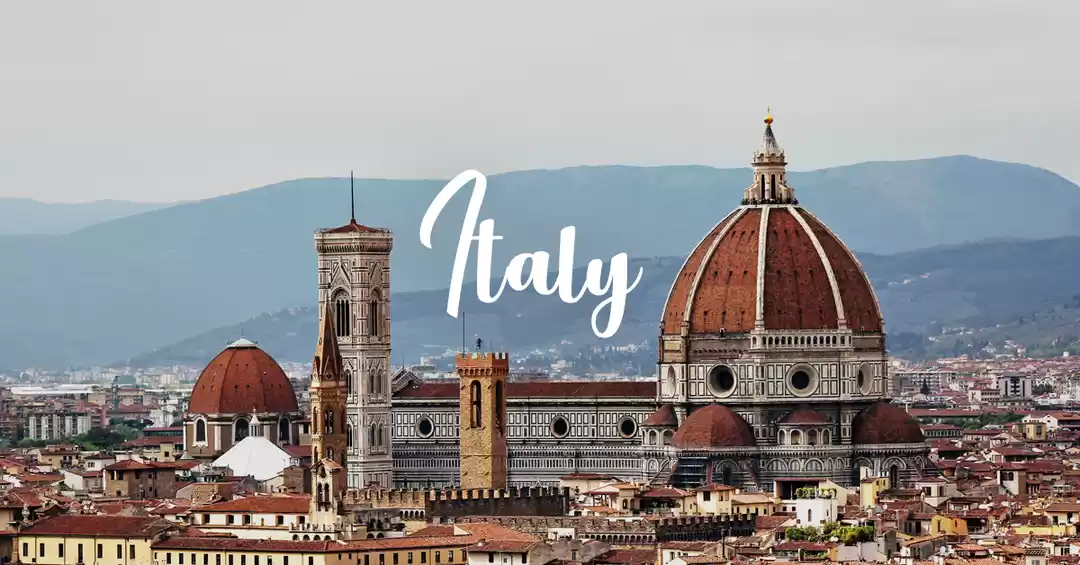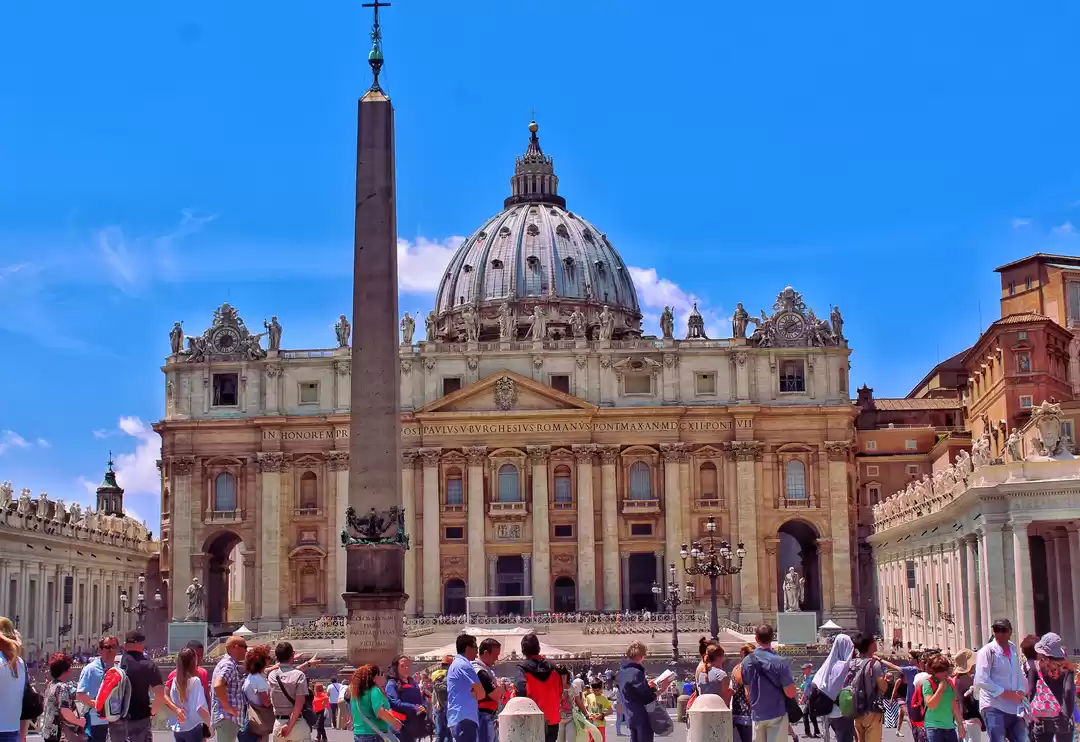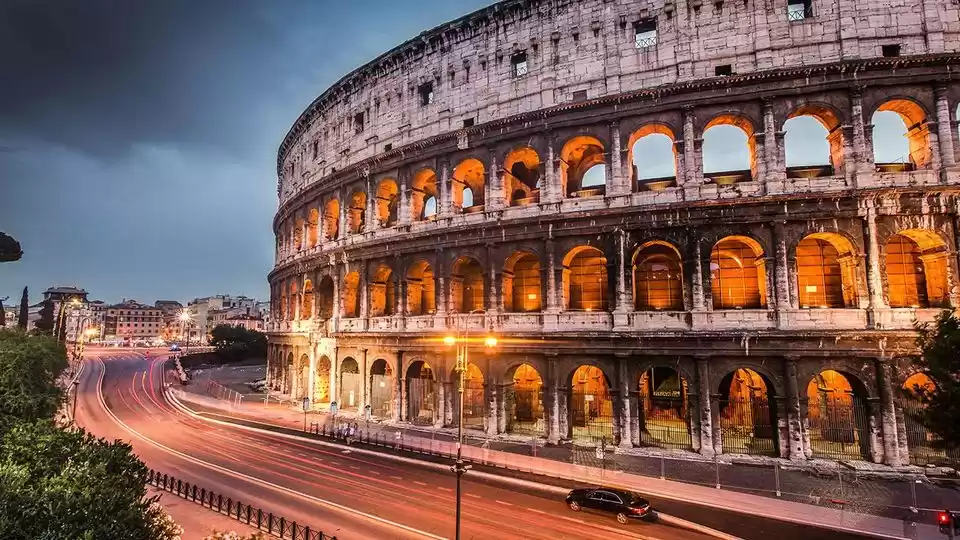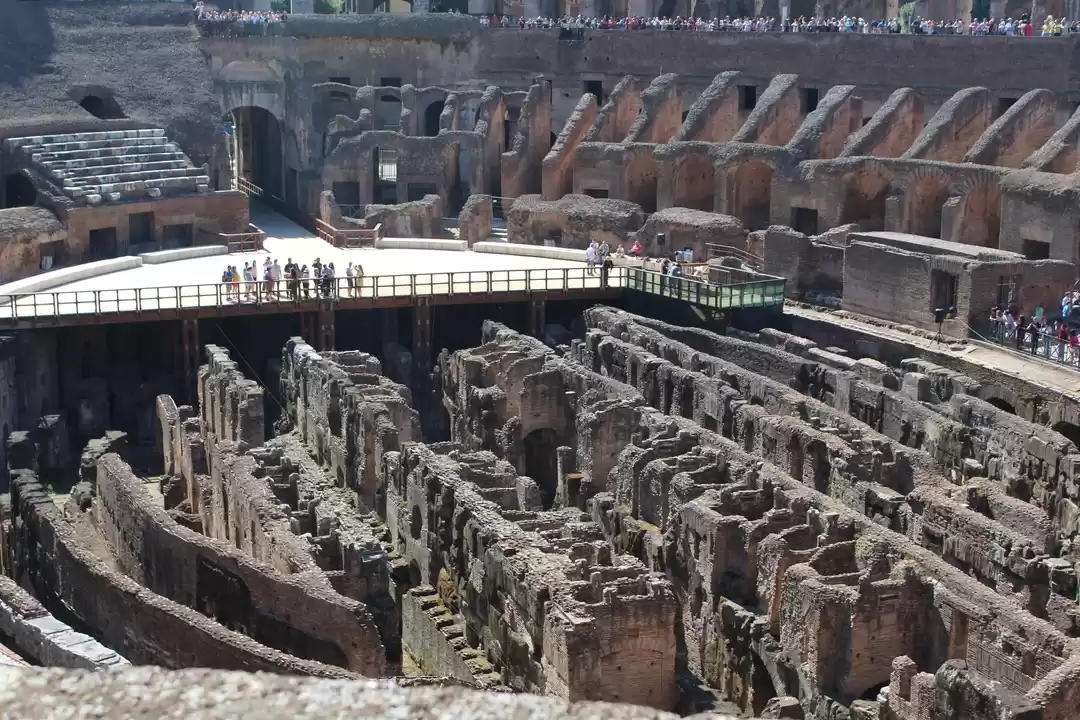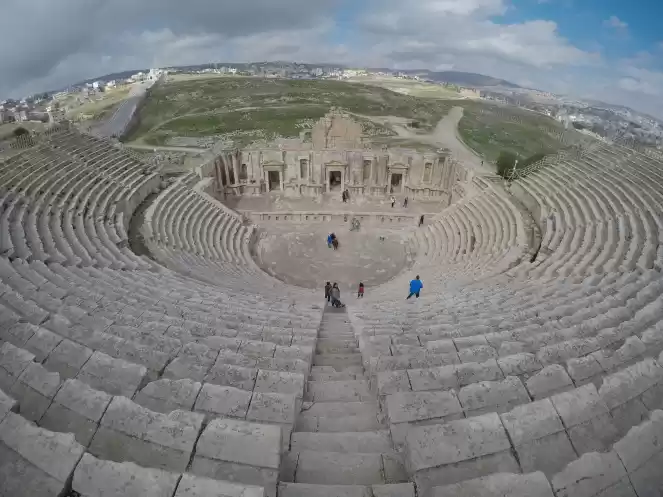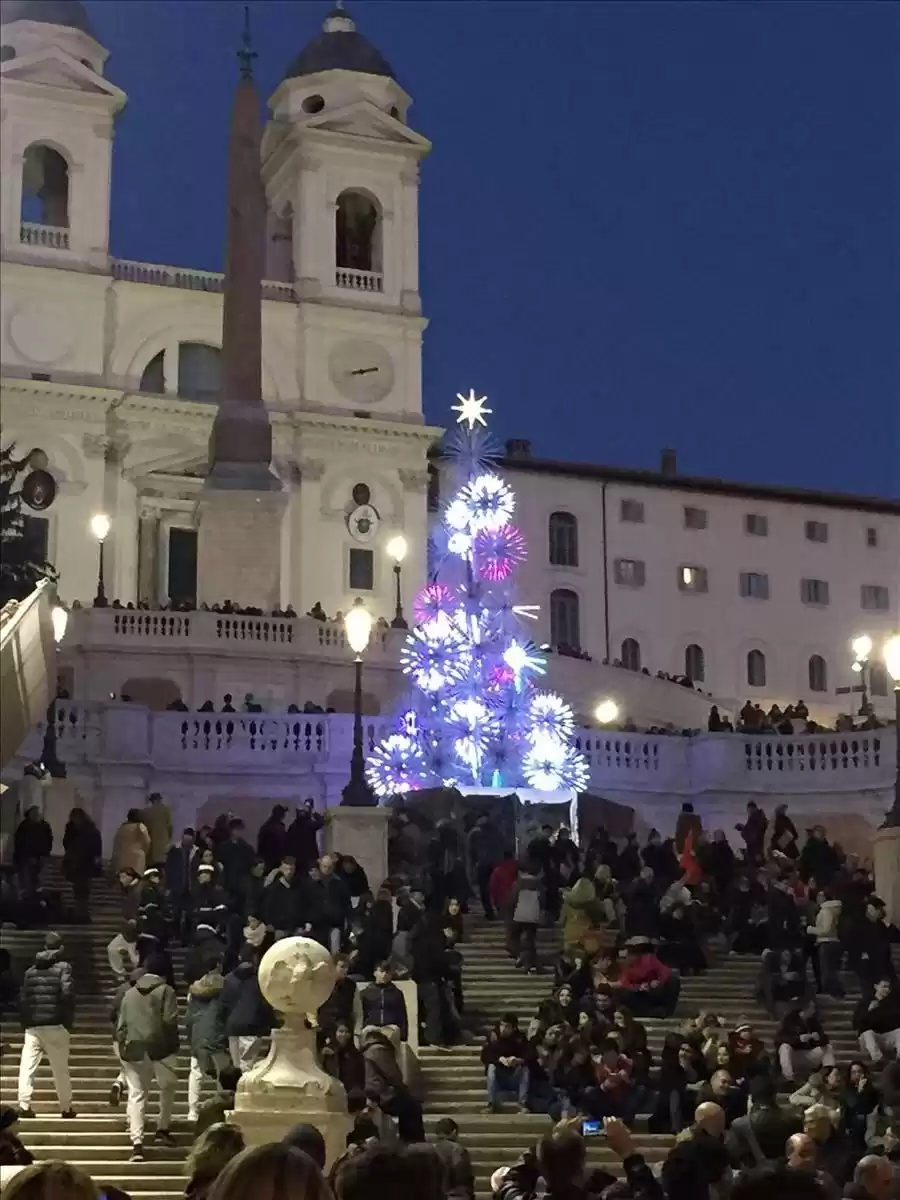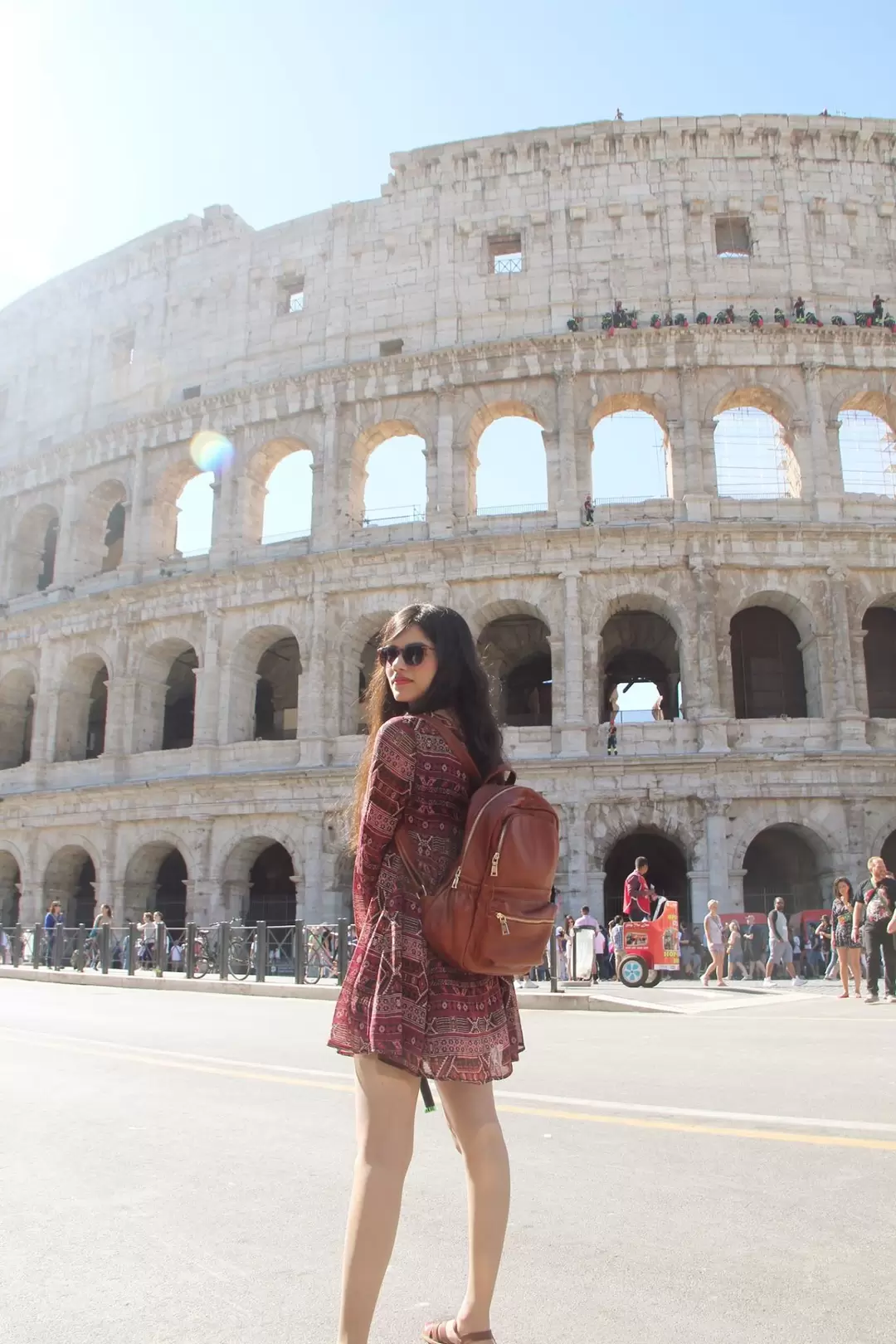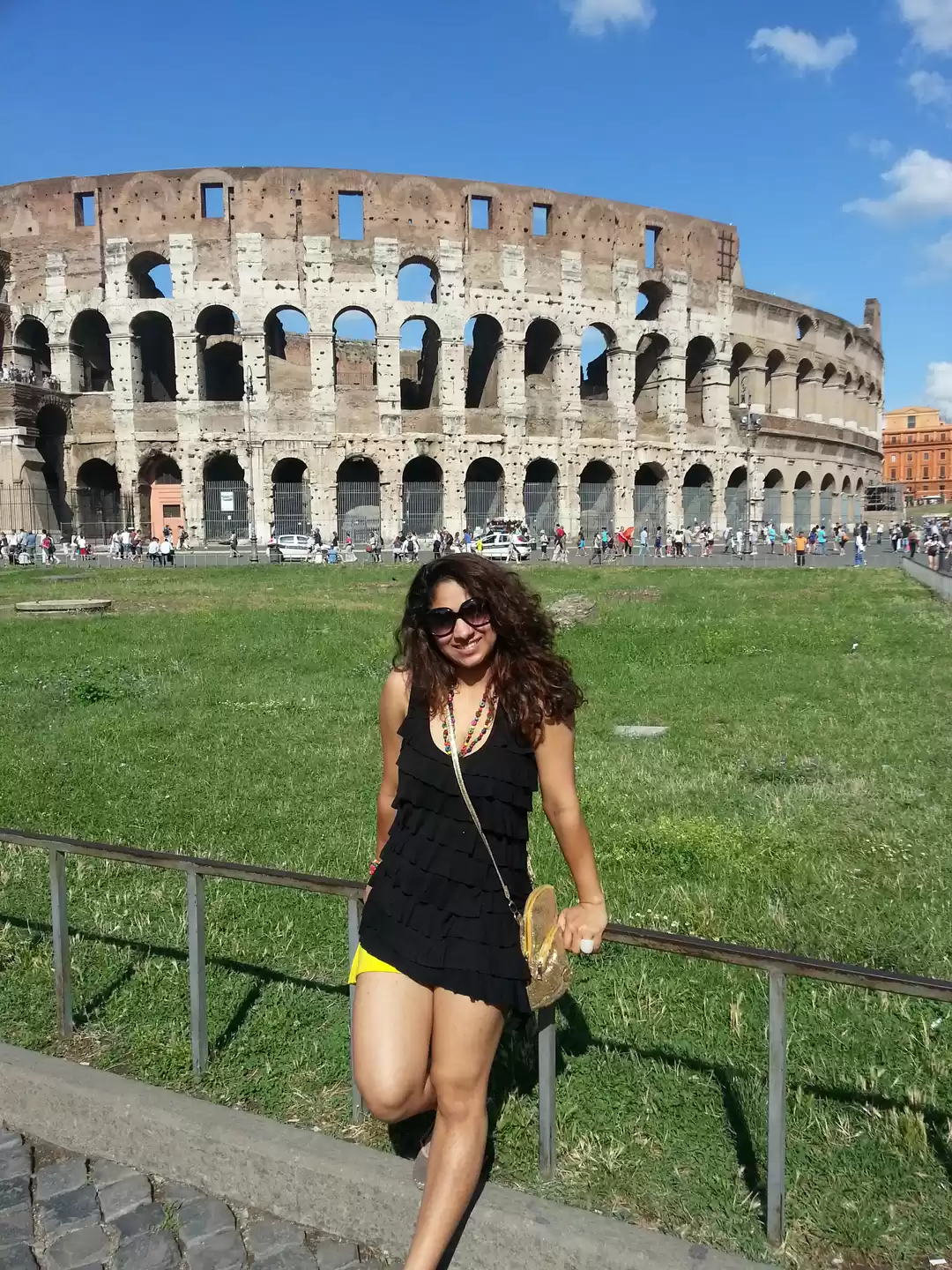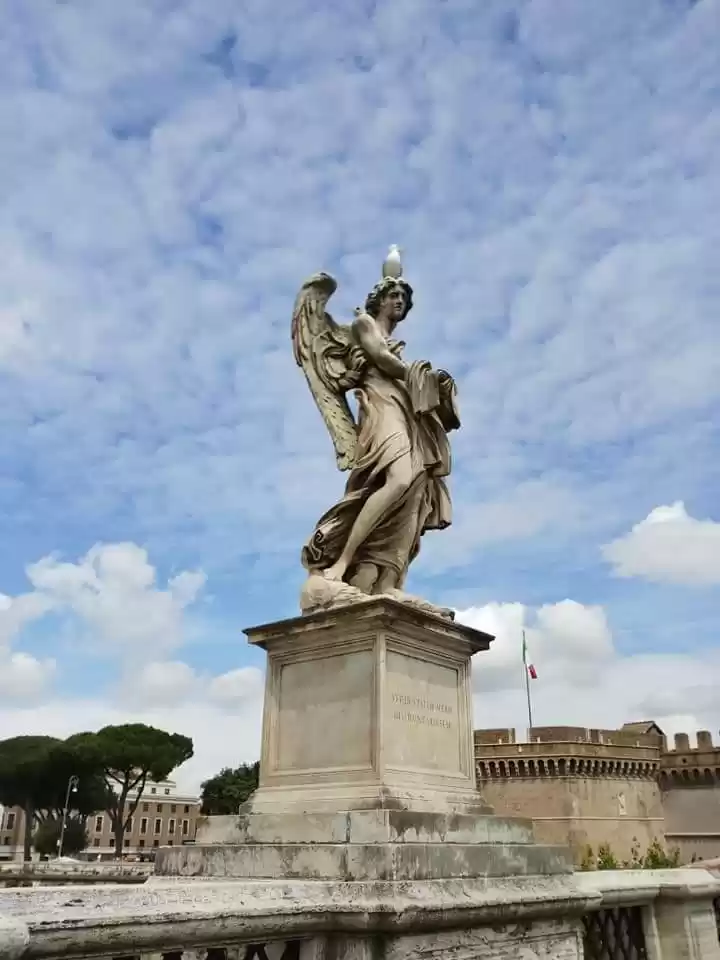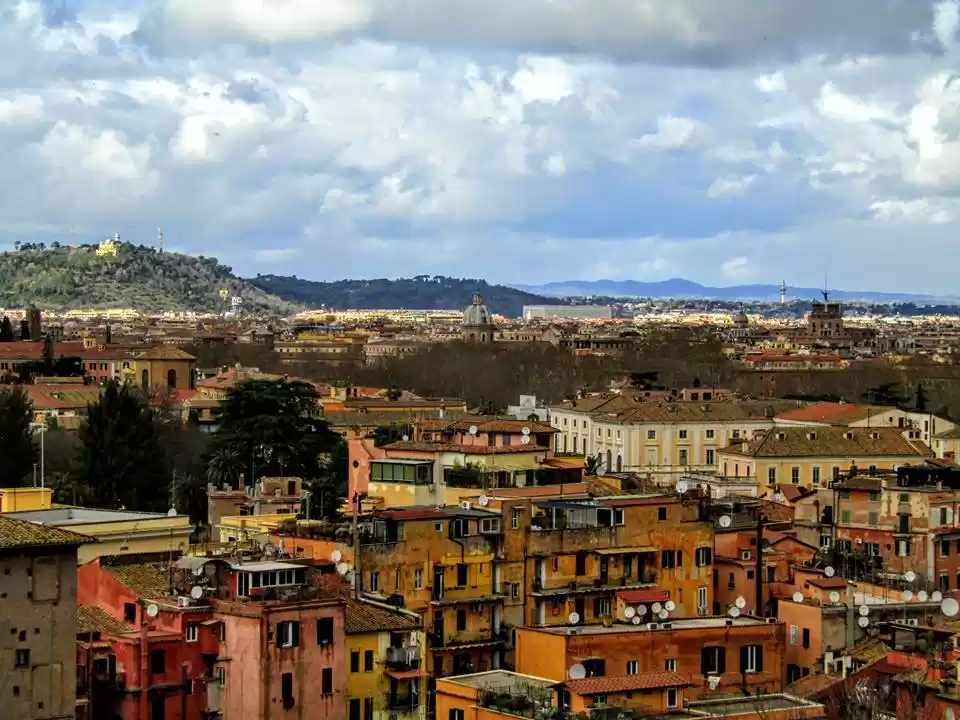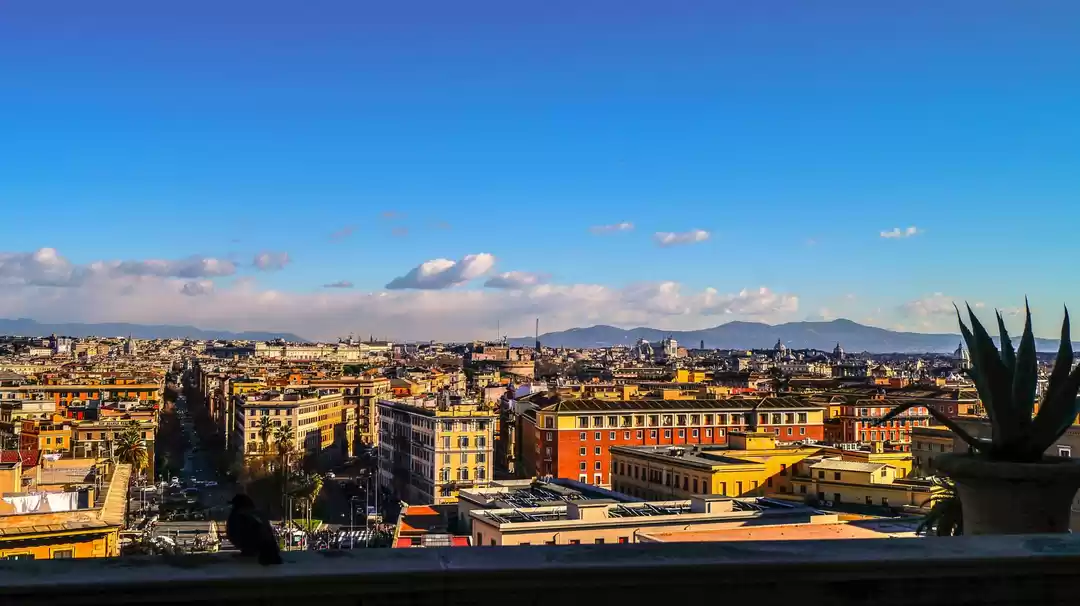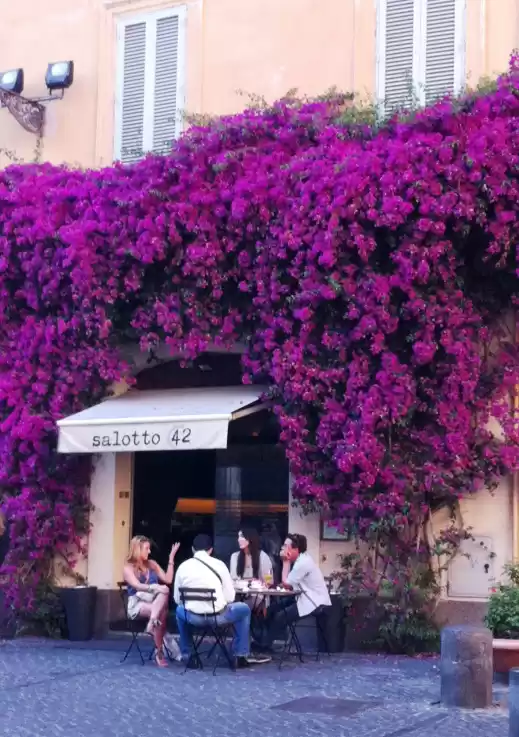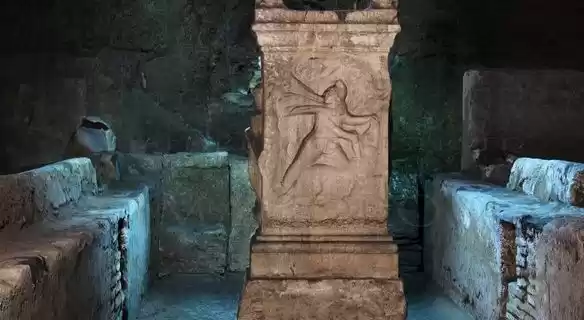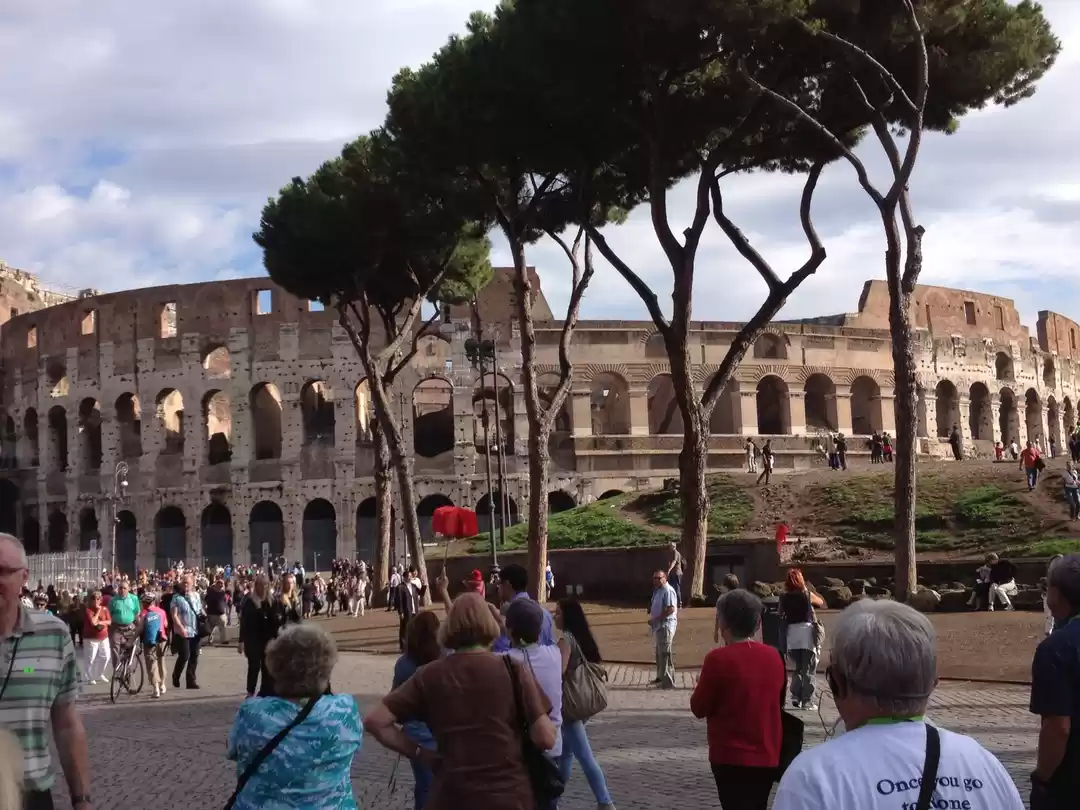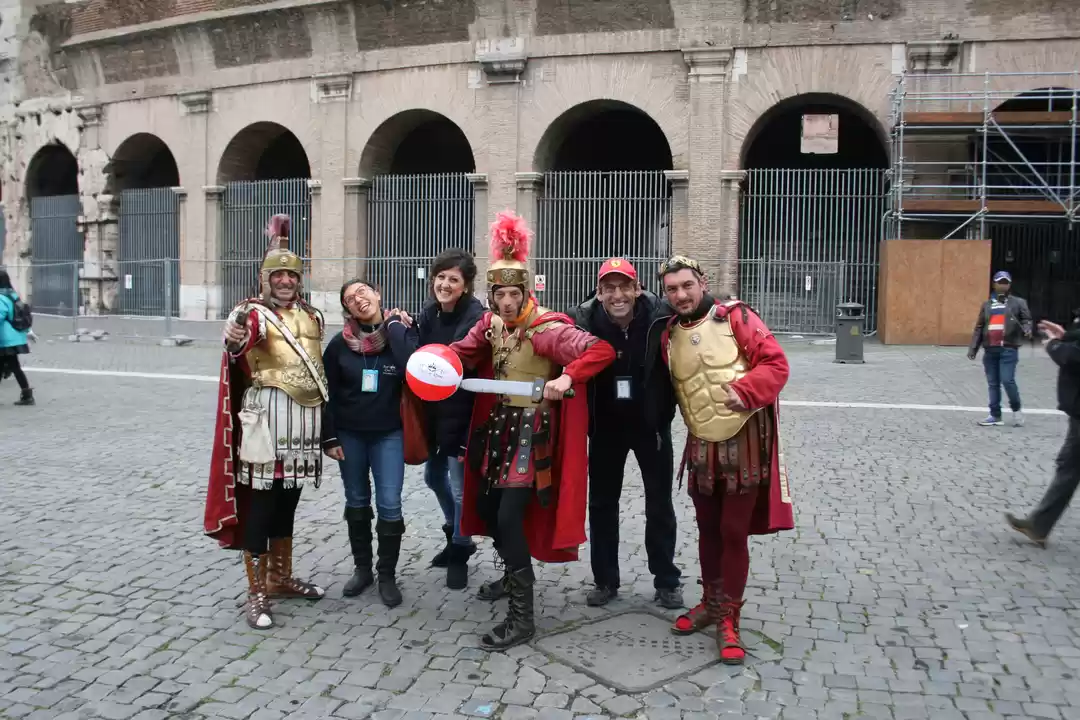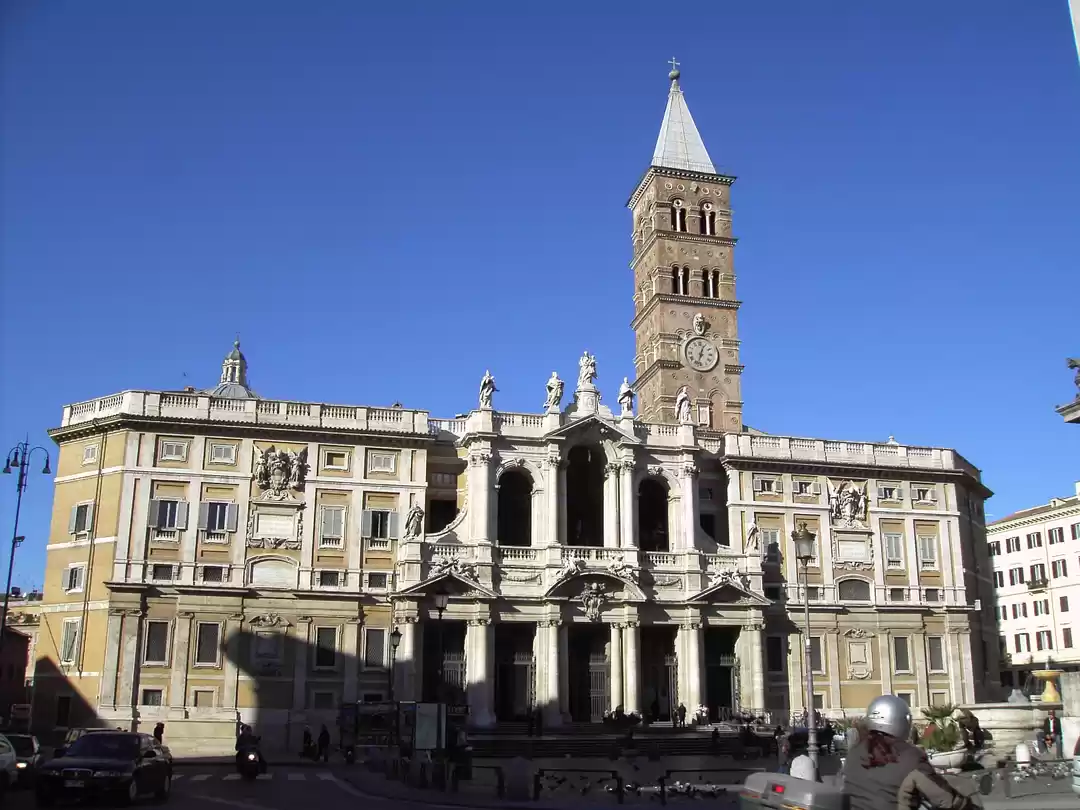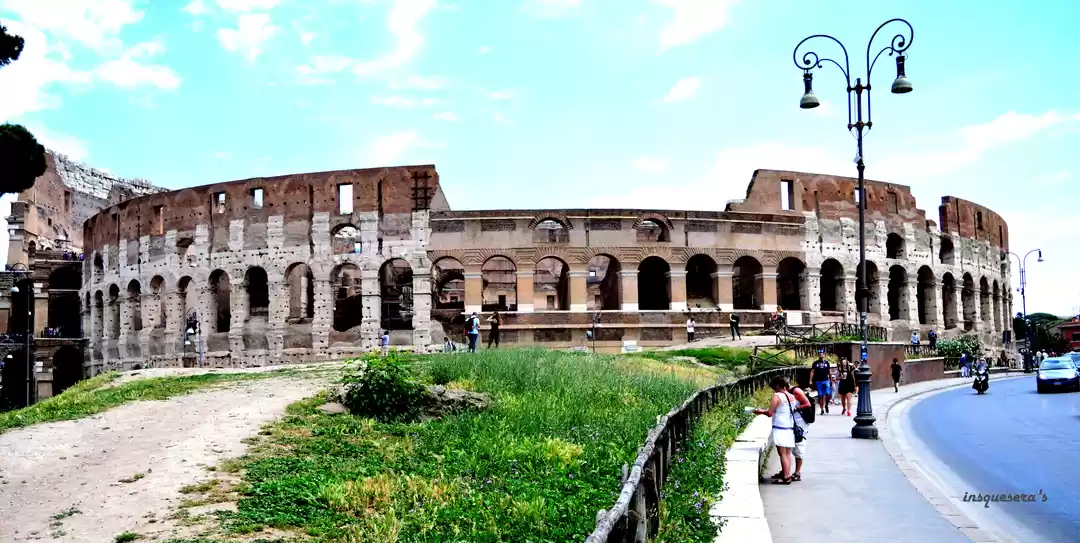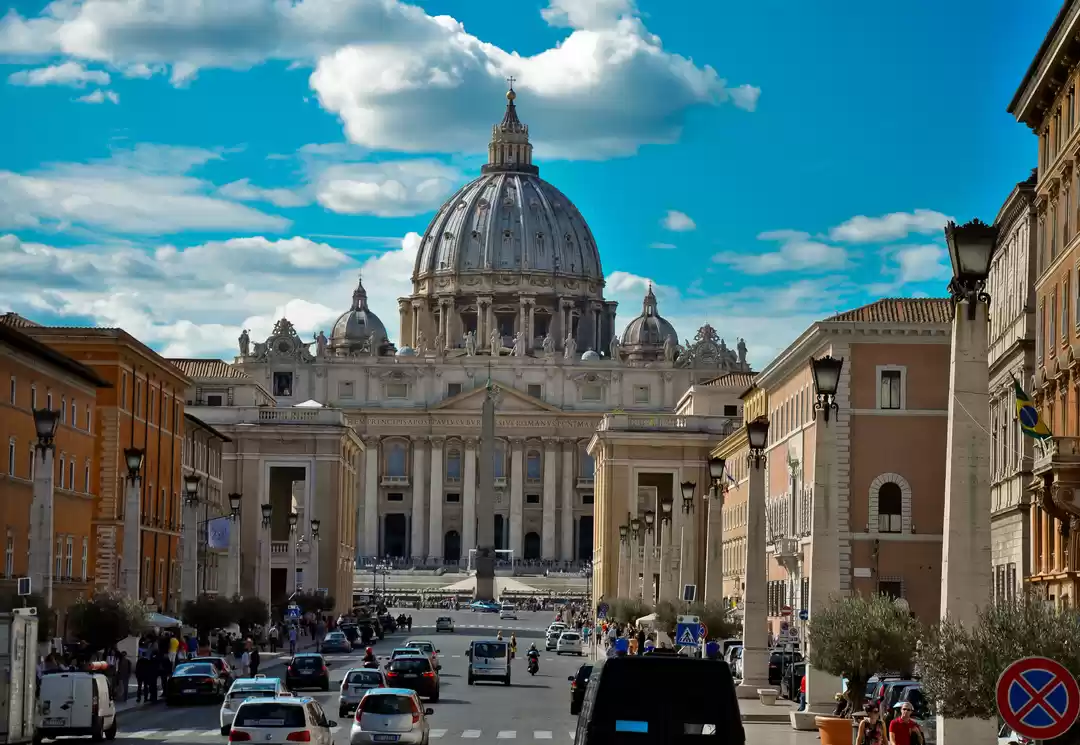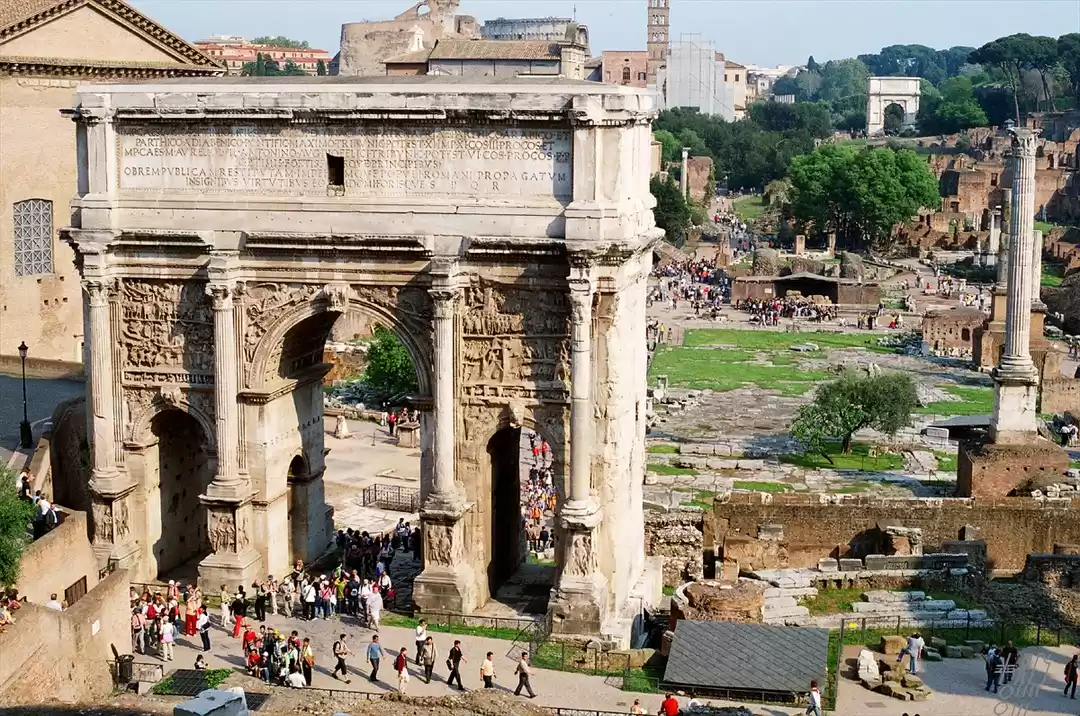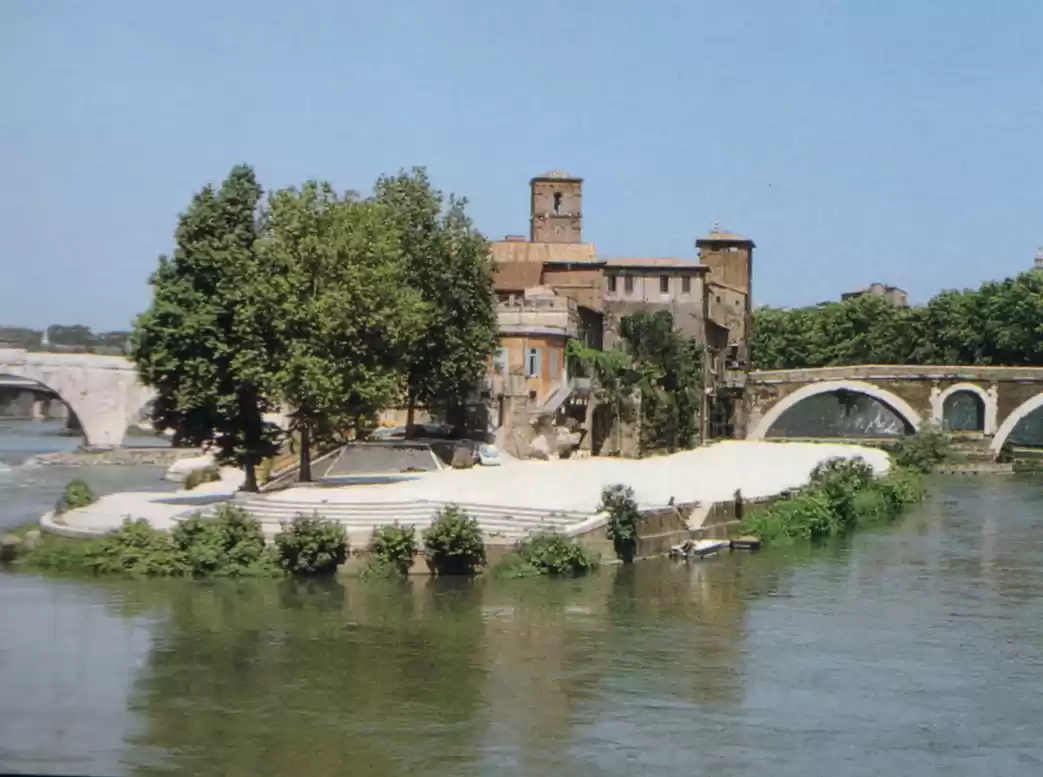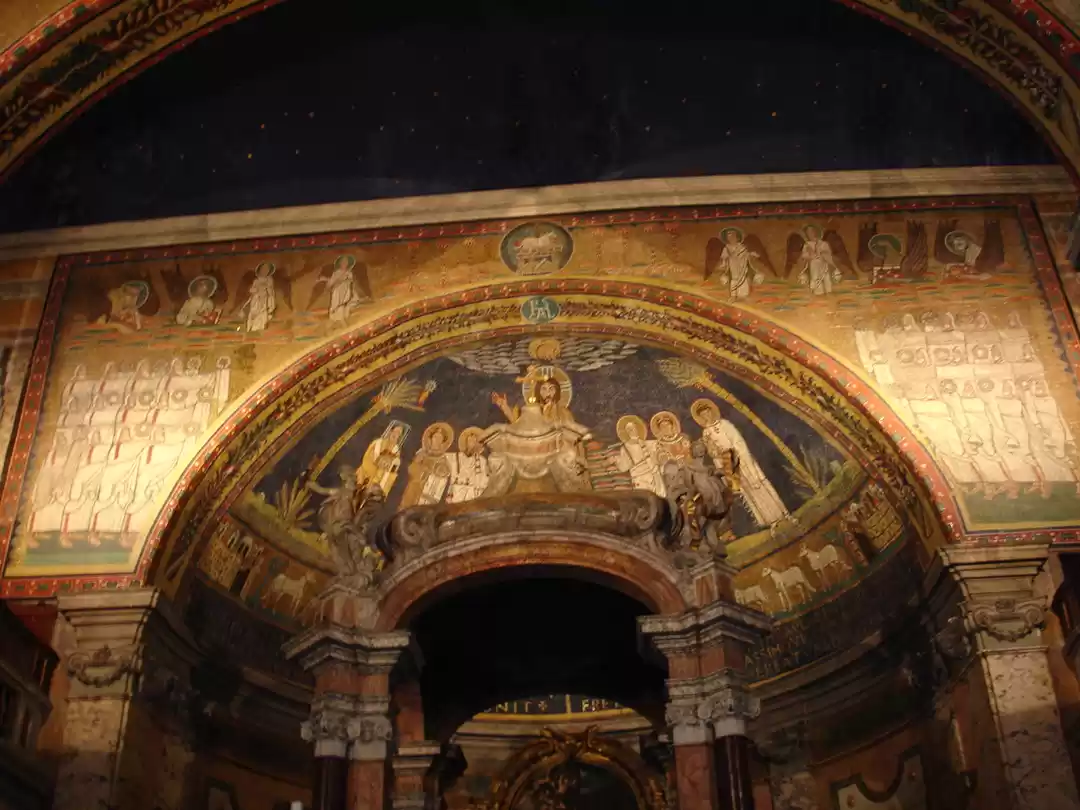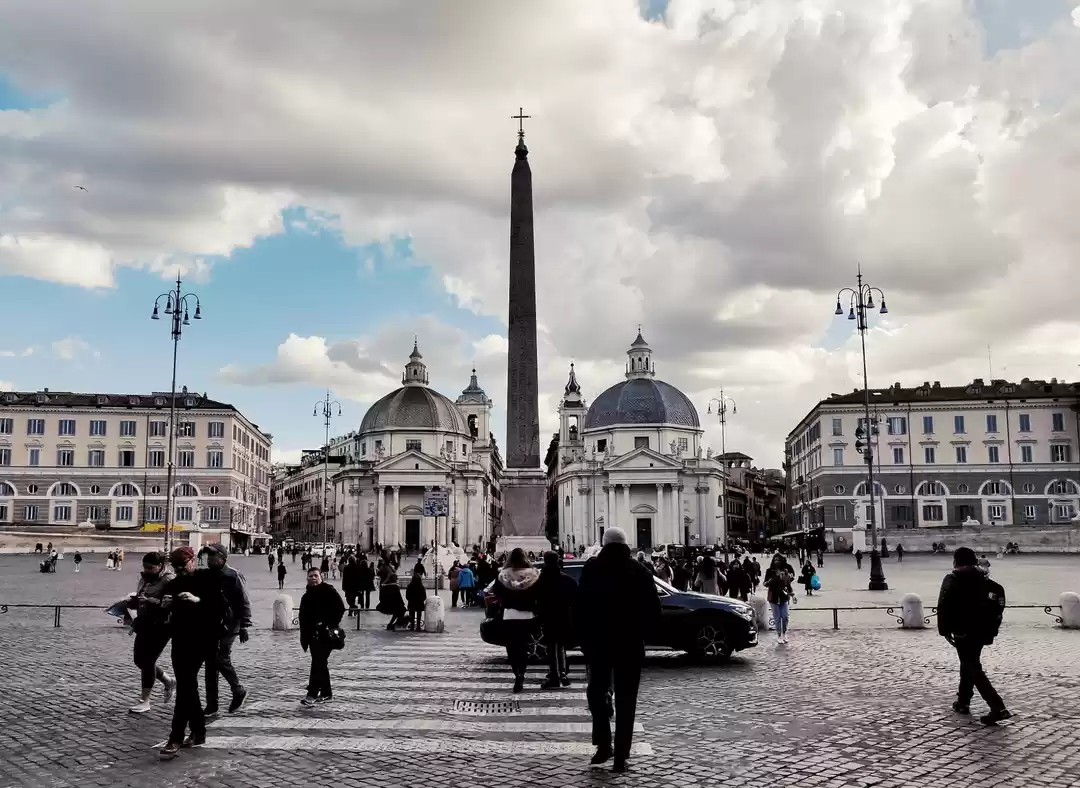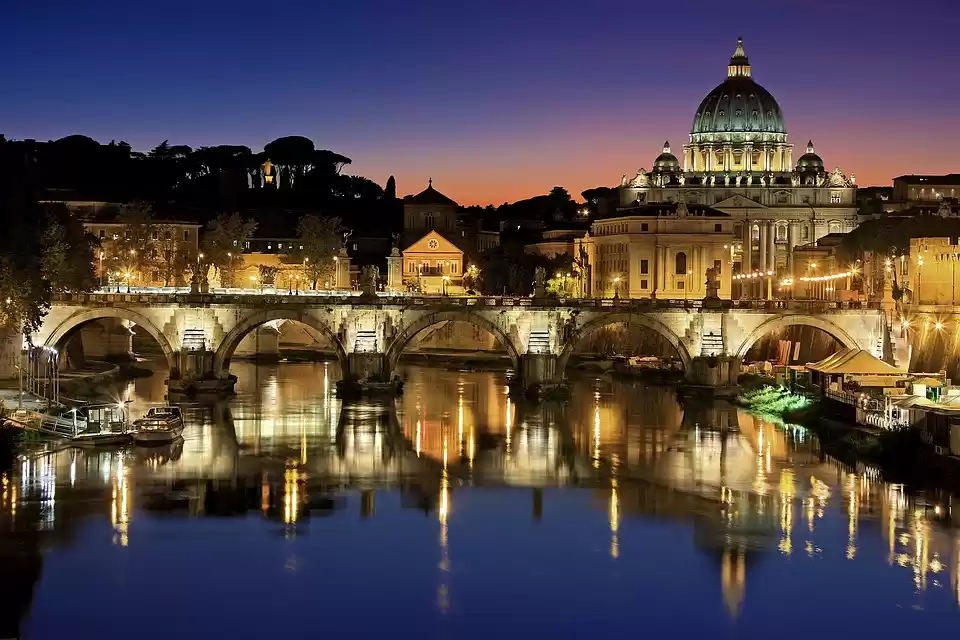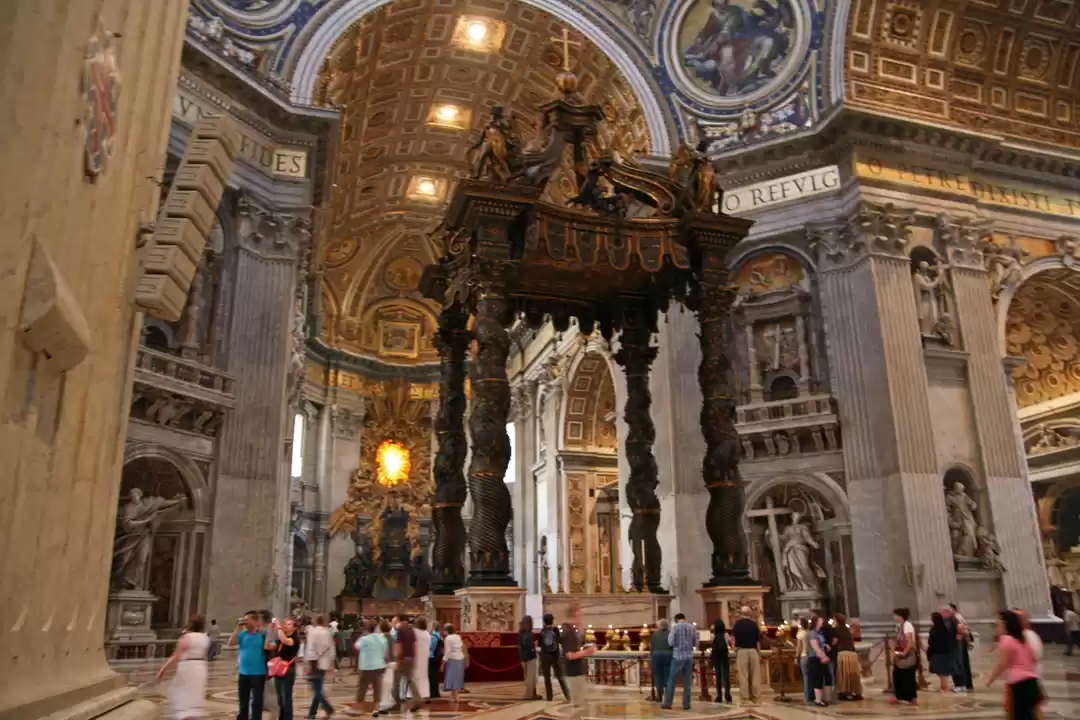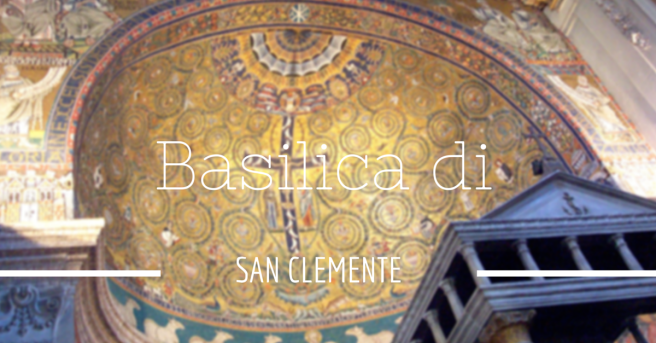
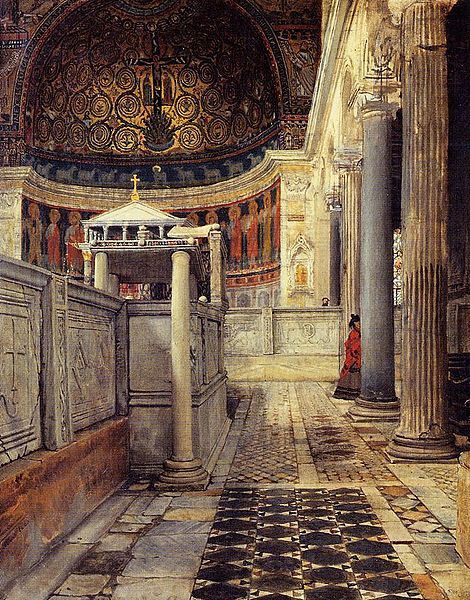
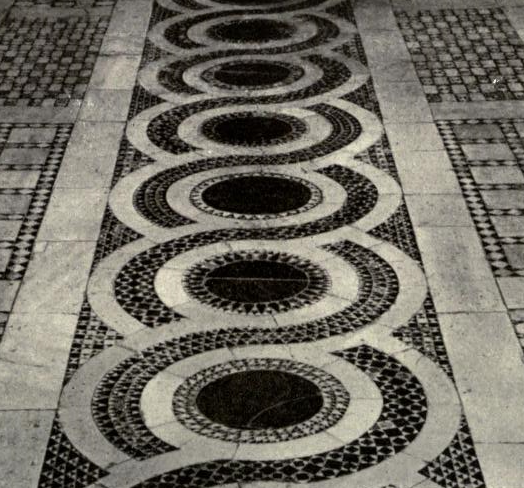
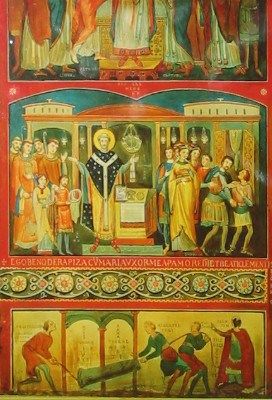
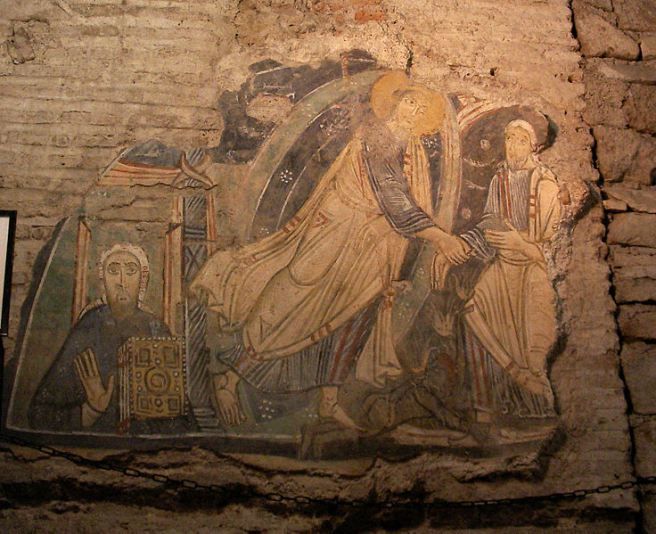
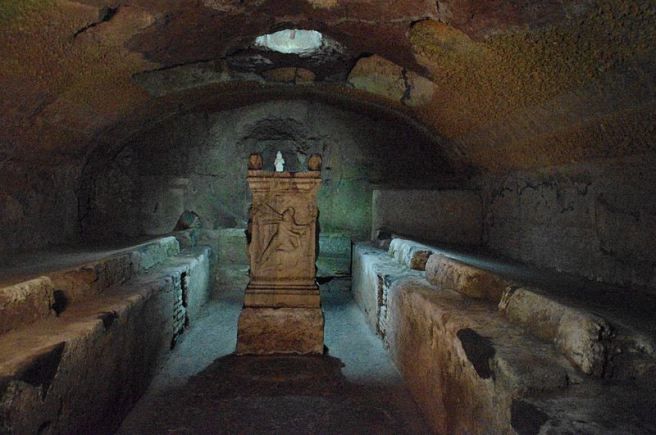
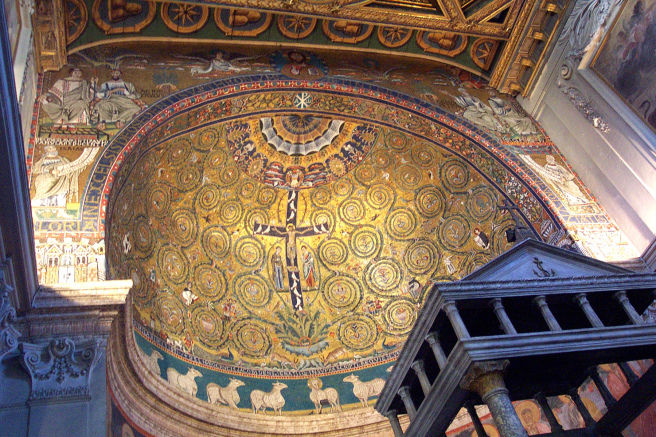
Everyone knows that there are amazing sites in Rome and many are world renowned but there are equally important and interesting sites that are a lot smaller, hidden and well worth seeking out. Perhaps my favorite hidden archaeological site in Rome is the Basilica di San Clemente. The Basilica di San Clemente represents one of the reasons I find Rome so fascinating. Every turn in this city reveals its past and its layers of history.
The Basilica di San Clemente is located off Via Labicana and is just steps away from the Roman Coliseum. It may look like just another small church in Rome but it holds a secret underneath the the intricate cosamati floor. When you enter into the church you are greeted by a hodgepodge of artistic styles. There are medieval frescos over the altar, a baroque ceiling and the cosamati floor composed of marble from ancient roman ruins. However, perhaps the most interesting part of this mishmash of art and architecture is the remains of the 4th century church on the right hand side of the church.
While the remains on the right hand side of the church may not look like a big deal they actually are part of the walls of the 4th century church which is below the 12th century church that you entered. And now we get into why this church is one of my favorites. UNDERNEATH the 12th century church there are 3 other levels of buildings going all the way back to the 1st century and you can GO DOWN AND VISIT ALL THREE LEVELS! Let the nerdy archaeologist in me freak out for a bit.
When you head down the stairs to the 4th century it is amazing to think that you are going back almost 800 years. There are few other cities in the world where you can literally step back in time. Perhaps the most interesting part of the 4th century church, other than being the original basilica, are the mosaics dating from the 900s where you can find the one of the earliest examples of written Italian.
Just to the left of the altar in the central nave of the 4th century church is a mosaic depicted St. Clemente and the Roman senator, Sisinnius. Sisinnius suspects his wife of cheating and so he follows her but instead of cheating on him she is a secret Catholic. When Sisinnius realizes that she is a secret Catholic and is attending mass he threatens to arrest them all. St. Clemente, who is leading the mass, strikes him blind so that he cannot arrest them and all the Catholics escape.
The next day St. Clemente, being Pope, feels bad about striking Sisinnius blind and goes to his house to ask forgiveness. Sisinnius, hearing St. Clemente’s voice, orders him to be arrested immediately. Obviously, St. Clemente did not want to be arrested so instead he caused everyone to be confused. I like to think he waved his hand and said, “I am not the pope you are looking for”. Instead of arresting him they tried to arrest a column. You can see this in the mosaic with the writing of “Fili de le pute, traite!” which translated means that Sisinnius was screaming at his soldiers “Come on you sons of bitches, pull!”. So there you have it, the first written Italian. To be fair, it is not shocking that the first written Italian is swearing. Italian was basically a slang offshoot of Latin. What is interesting is that you see it written in Italian as Italian at this time was not normally written down as it was not an official language. Writing Italian down shows that the language was developing more and was becoming more than slang.
There are also several other mosaics and frescoes decorating the walls of the 4th century church. Perhaps my favorite is the fresco of Christ in Limbo which is located in the first nave after you descend the stairs. The fresco is from the 11th century and shows Christ’s descent into limbo because he actually he died for 3 days. While he is in limbo he gathers up all the souls who can now enter heaven. One of the souls who has been in limbo since the dawn of freaking time is Adam. Can you imagine being Adam and having to wait ALL THAT TIME to go to heaven? I am assuming he is stoked to leave limbo however, the demon who has been torturing him for the past few thousand millennium is not keen to let him go. Thank god Christ is there though because the fresco shows him stomping on the demon.
As you descend down another level you head back to the 2nd century and this level is quite interesting because it houses the cult of Mithras. It is not unusual for churches to have been built on top of ancient roman pagan temples. You can see this throughout the city and some of the names of churches reflect this phenomenon like Santa Maria Sopra Minerva (St. Mary above Minerva) near the Pantheon. What makes this cult different is that Mithra was a god from Persia and he was considered one of the ancient mystery religions. There is not a whole lot known about Mithra since he was worshiped in secret however we know he was very popular with the military and ex slaves and was a men’s only cult. Soldiers identified with the Mithraic cult because there were seven levels of initiation which mirrored ones ascension through the military ranks and for ex slaves it mirrored their progression through society.
Mithra was born from a rock in a cave on the 25th of December. It is thought that Jesus’ birthday was moved from the springtime to the middle of December partly because of the popularity of the Mithraic cult (and other factors including the winter equinox). The central ceremony of the cult took place in the Mithraic triclinium which is just to your left as you descend the stairs to the 2nd century. The triclinium was the dining room where they held the feast dedicated to Mithra. You can see the original altar here and the ceiling of the dining room is supposed to look like the cave where Mithra was born. In the ceiling there are holes and it is thought that the feast would take place during certain alignments of the sky with the triclinium.
As you begin to head down to the 1st century you actually cross an ancient alley. That is right you get to cross an ancient street! Pretty freaking cool, right? In the 1st and 2nd centuries you would be outside at this point. It is crazy to think about this. This is due to the fact that the Tiber river had a nasty habit of flooding all the time and so it would slowly cover the city with sediment and bury the older buildings. Instead of digging it out constantly the romans decided to build on top of it over time and use older buildings as foundations. Smart cookies.
At the bottom of the stairs you can tell you are supposed to be outside because the outer walls are covered in Tufa, which is a volcanic stone you find all over Rome even in the building of the Coliseum. It is unknown that this 1st century building is but it is thought that it may possibly have been the roman mint, a granary or even a public home. While it is unknown what the building may have been it is thanks to this level that all of this was discovered. As you descend lower and lower you can hear running water and this constantly running water was enough to drive Father Joseph Mulooly crazy; enough that he hired an archaeologist to find the source of the water. Eventually they made their way down to the 1st century and discovered that the source was an ancient roman pipe that was still active. The water still flows through the building today and it is amazing to see that these ancient roman pipes still work today 2000 years after they were built. I just wouldn’t drink the water as this could result in severe lead poisoning.
There is so much to explore at the Basilica di San Clemente and it is so much more than just a beautiful church. If you find yourself around the Coliseum with some time to spare I would certain suggest a stop at this incredible site.

